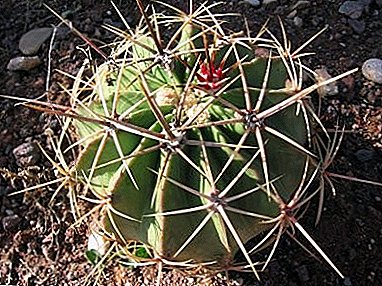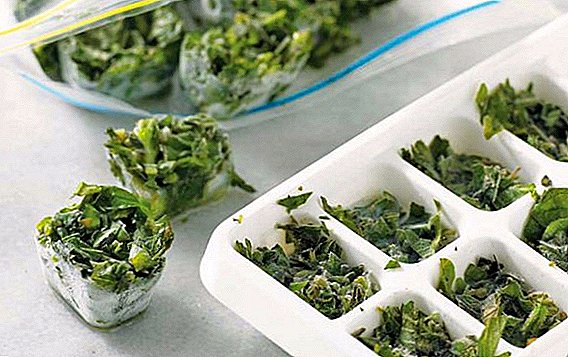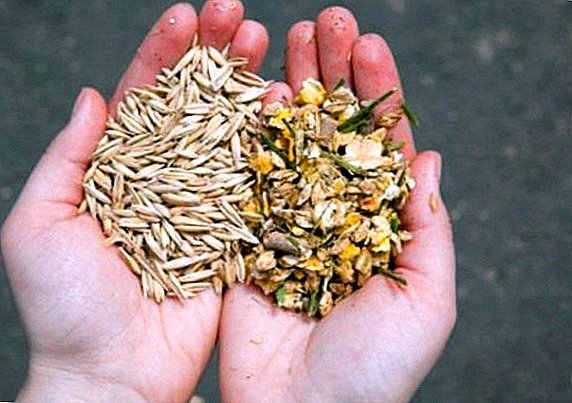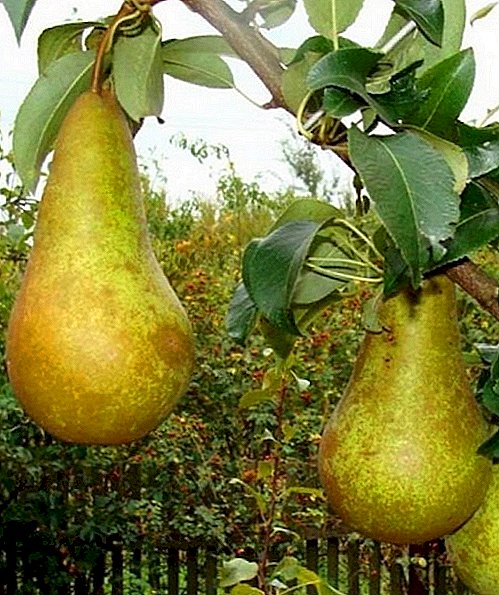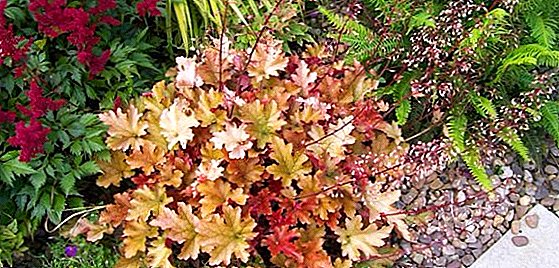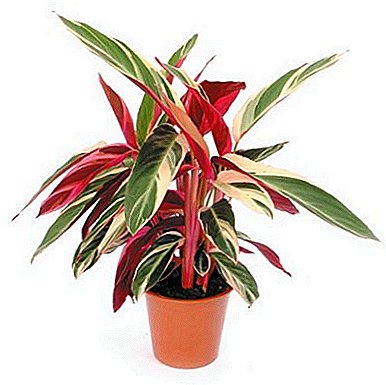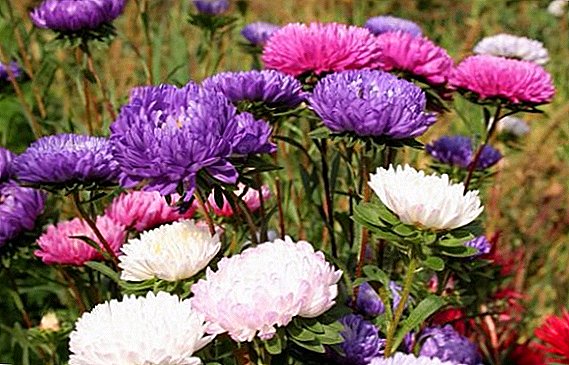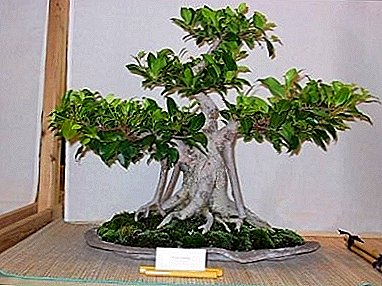
"Retuz" or Ficus "Blunted" - an evergreen plant with aerial roots that support the branches.
In its natural environment, it grows into a mighty tree with a dense crown, and among fans of indoor plants it is often grown as bonsai, intertwining aerial roots with the main trunk.
general description
The flower is native to the tropical forests of Southeast Asia, and is also often found in the savannah.
In nature, usually grows tall up to 20 meters.
Externally similar to Ficus Benjamin, from which it differs by horizontal branches with dense pointed leaves.
They are dark green in color, have a smooth surface and short stalks.
Ficus grows slowly enough.
Home care
Ficus "stranded" unpretentious in the care at home, can easily survive being in the shade.
However, he does not like drying the earthy coma or a constant change of environmental conditions.
Scientific name
The Latin name of the plant is Ficus retusa.
Care after purchase
The ficus does not like a sharp change in the situation, and therefore immediately after the purchase it may react with yellowing and dropping the leaves. There is nothing terrible in this, but it is worthwhile to immediately place it in conditions optimal for the development of a flower.
Attention! When choosing a plant in a store, look at the condition of the soil - it should not be too wet, exude an unpleasant smell, have a white patina.
Replanting a flower in a new pot costs two weeks after the purchase - it will give him time to adapt to the apartment microclimate.
The soil is chosen specialized for ficuses and palms, and the root system is best neatly cleaned from the transport substrate.
Breeding
 The plant can be propagated by cuttings, air branches, seeds. The latter are purchased in specialized stores.
The plant can be propagated by cuttings, air branches, seeds. The latter are purchased in specialized stores.
Cuttings are easiest to take root in spring and summer. Previously they must be held in water to drain the milky juice.
Then the cuttings are planted in warm soil, where they are kept in heat and humidity. (recommended temperature + 25-30 degrees).
They can also be rooted in water, but because of the secretions of juice, it must be changed frequently.
Temperature
The ficus "Blunt" is thermophilic and light-requiring. It must be placed in a lighted place, protecting it from direct rays.
Best temperature in the summer - + 15-25 degrees in winter - not less than +15 degrees Perfectly tolerates penumbra.
Attention! This plant does not like to turn the crown relative to the light source - it does not need to be rotated on the windowsill to form symmetry. If the plant is rearranged somewhere, then it is necessary to orient it with a more developed part of the crown towards the nearest light.
It is necessary to avoid finding ficus in the draft.
Benefit and harm
The ficus makes a great contribution to the creation of the microclimate of the apartment - it can perfectly purify the air from impurities of phenol, benzene, and trichlorethylene. Negative effects on the surrounding flower does not have.
Watering
 In the period from March to September, the Ficus needs abundant watering, but it is important not to allow waterlogging.
In the period from March to September, the Ficus needs abundant watering, but it is important not to allow waterlogging.
The procedure is carried out with settled water after the drying of the top layer of soil.
In autumn and winter the flower is at rest, and therefore the volume of watering should be reduced - an excess of water leads to the discharge of leaves.
As a tropic dweller, he needs moist air - he needs to spray at room temperature in the summer and in the winter.
Periodically, you can arrange a full bath under the shower.
Bloom
Practically does not bloom in the apartment.
Crown formation
The plant tolerates pruning, which made it popular with bonsai lovers. This operation is performed for decorative purposes, the best time for it at the end of winter - early spring.
During pruning the branches are shortened 1-2 leaf germ, which serves as a signal for the development of axillary buds and provides branching.
Attention! To give the necessary shape to the trunk, wire is used, which must be changed periodically to avoid damage to the trunk.
Soil and soil
To accelerate the growth rate, young plants are recommended to be placed in the humus sandy soil of neutral acidity.
For adult plants, you can purchase a special ready-made soil for ficuses, or make it yourself by mixing 2 parts of hardwood, turfy soil and peat and 1 part of sand.
For the drainage layer, an expanded clay aggregate or chipped brick is selected.
Planting and transplanting
 For planting rooted cuttings, 9-centimeter-sized pots are used, in which a mixture of equal parts of sod, humus, leaf soil and sand is poured.
For planting rooted cuttings, 9-centimeter-sized pots are used, in which a mixture of equal parts of sod, humus, leaf soil and sand is poured.
The root system of the ficus of the blunted grows quite actively, and the plant constantly requires transplanting into a larger pot.
It is advisable to replant young flowers every year, acquiring for it a capacity a couple of centimeters more than it was before.
In the future, the frequency can be reduced to one in 2-3 years.
The best time for transfers is spring.
During the procedure, the root neck cannot be buried.
On the contrary, during the formation of bonsai, you can raise the plant above the ground, exposing the woody part of the main root - it serves to store nutrients and is not involved in the absorption of moisture from the soil.
Since transplantation is a stress for a plant, it is not recommended to trim with it at the same time.
A photo
In the photo ficus "pertuplenny":



Diseases and pests
Most of the problems with the plant are associated with a serious violation of the conditions of care:
- leaf fall - due to excessive watering, low room temperature, drafts, abrupt changes in conditions of detention;
- young leaves do not develop, old ones sag - lack of minerals in the soil, high temperature in the room, dry air;
- yellowing and fall of the upper leaves - waterlogging of the soil, defeat by a fungus or rotting of the roots.
In each case, you can wash the leaves of the plant with a soft sponge with soapy water, and then treat with insecticides.
Ficus "Blunt" unpretentious in content, and can absorb substances harmful to humans from the surrounding air.
This is an excellent specimen for growing in the popular bonsai style.


